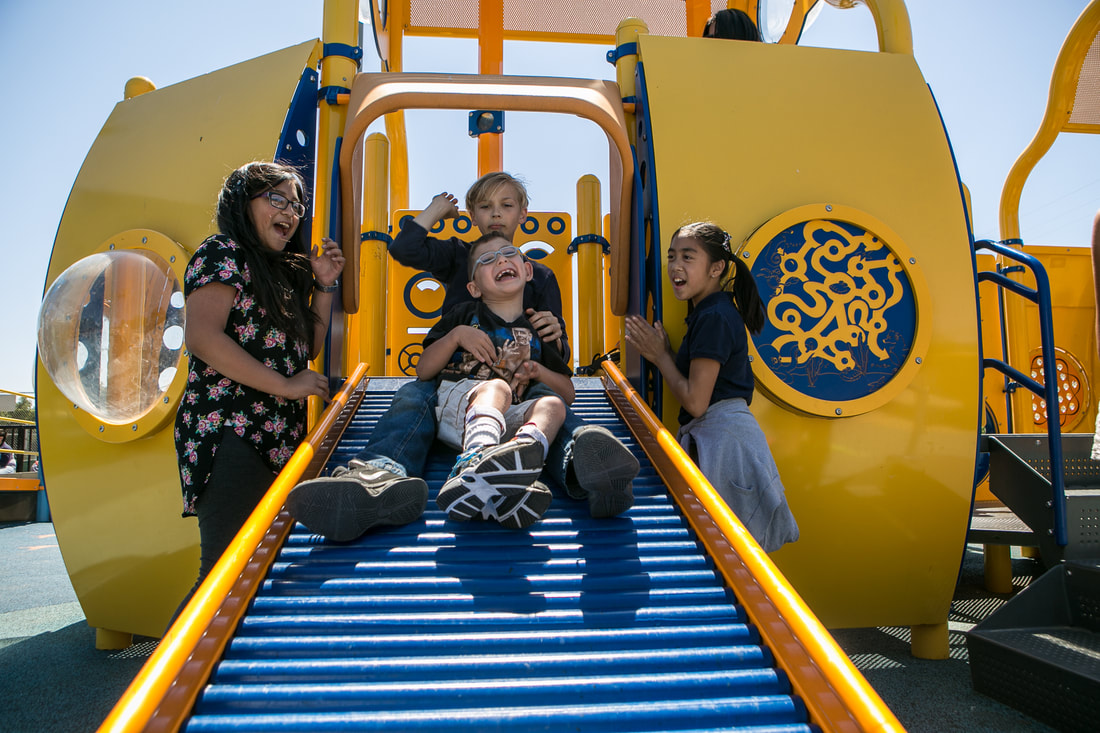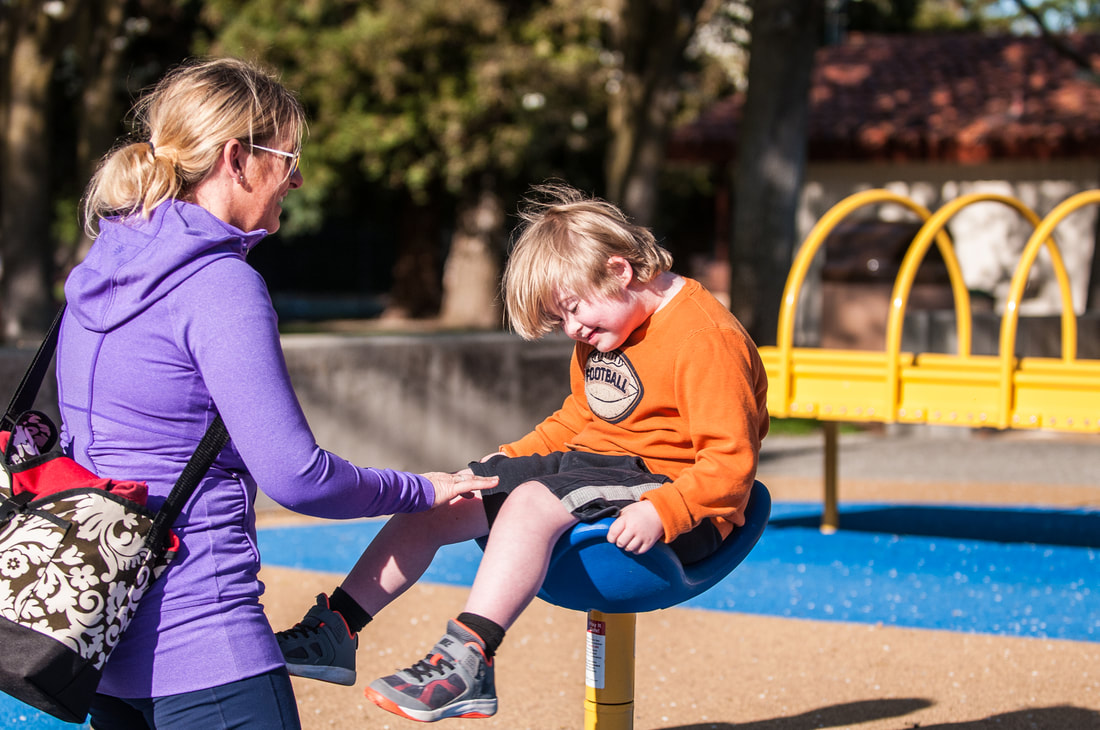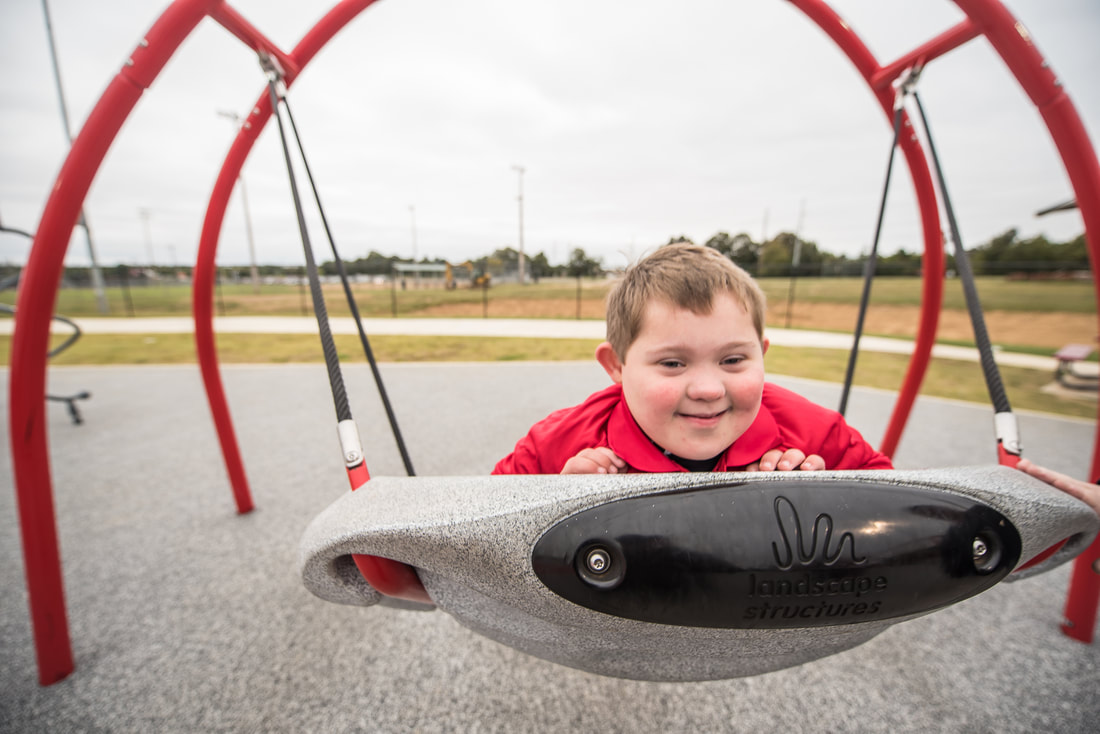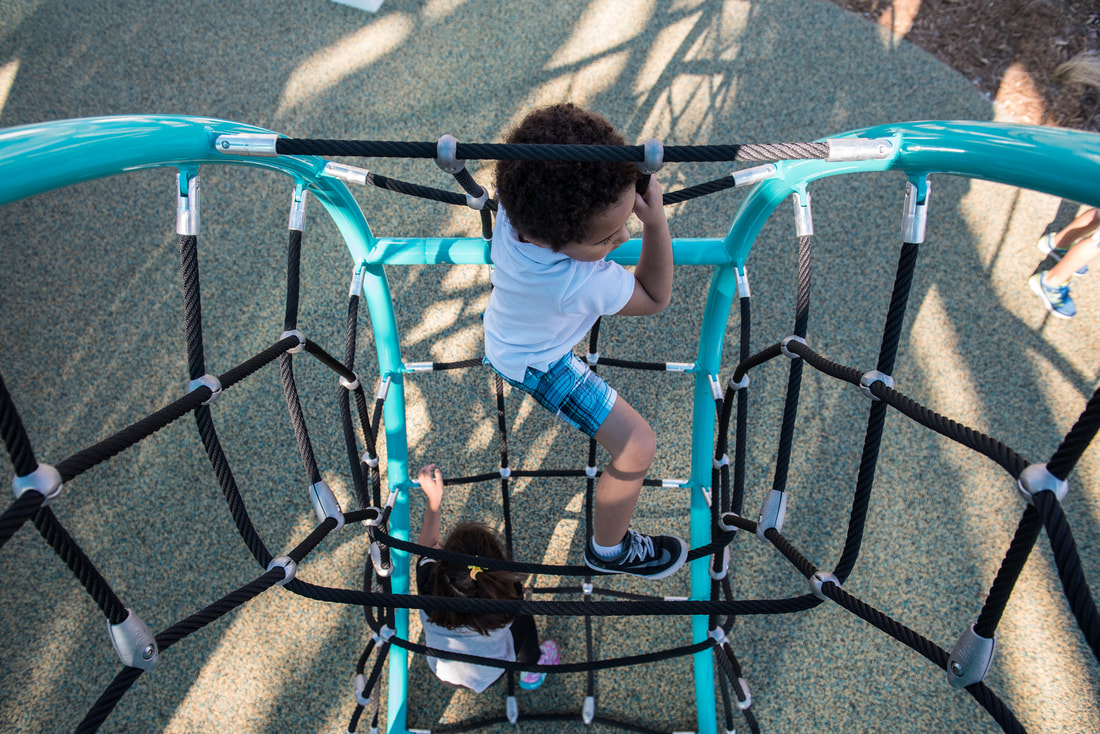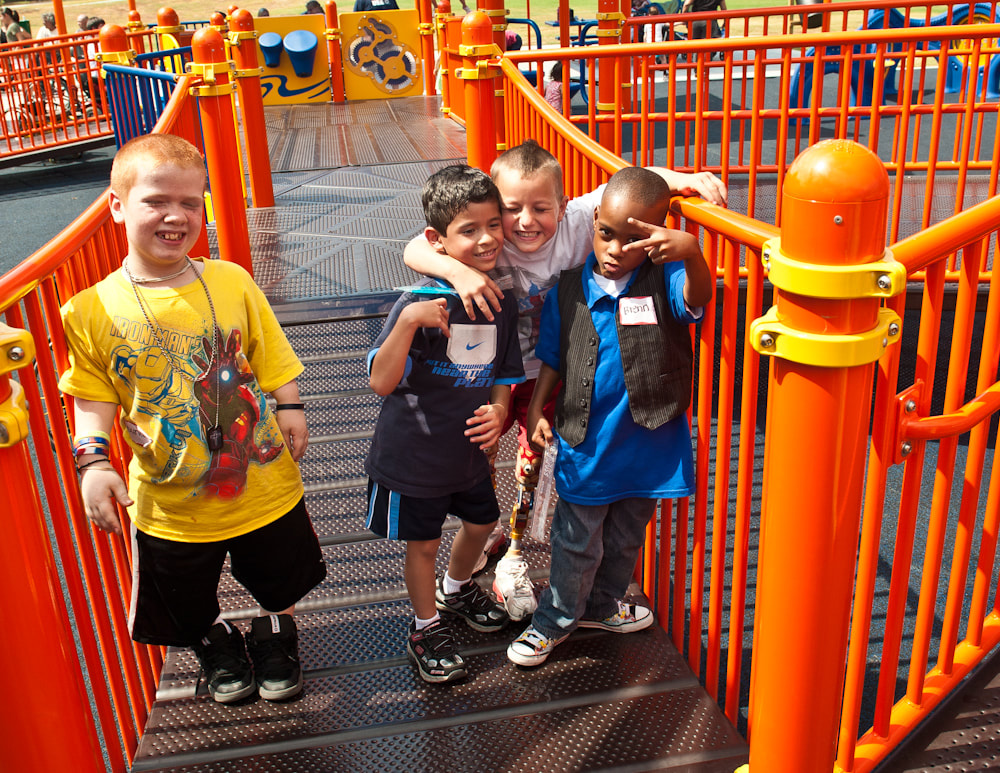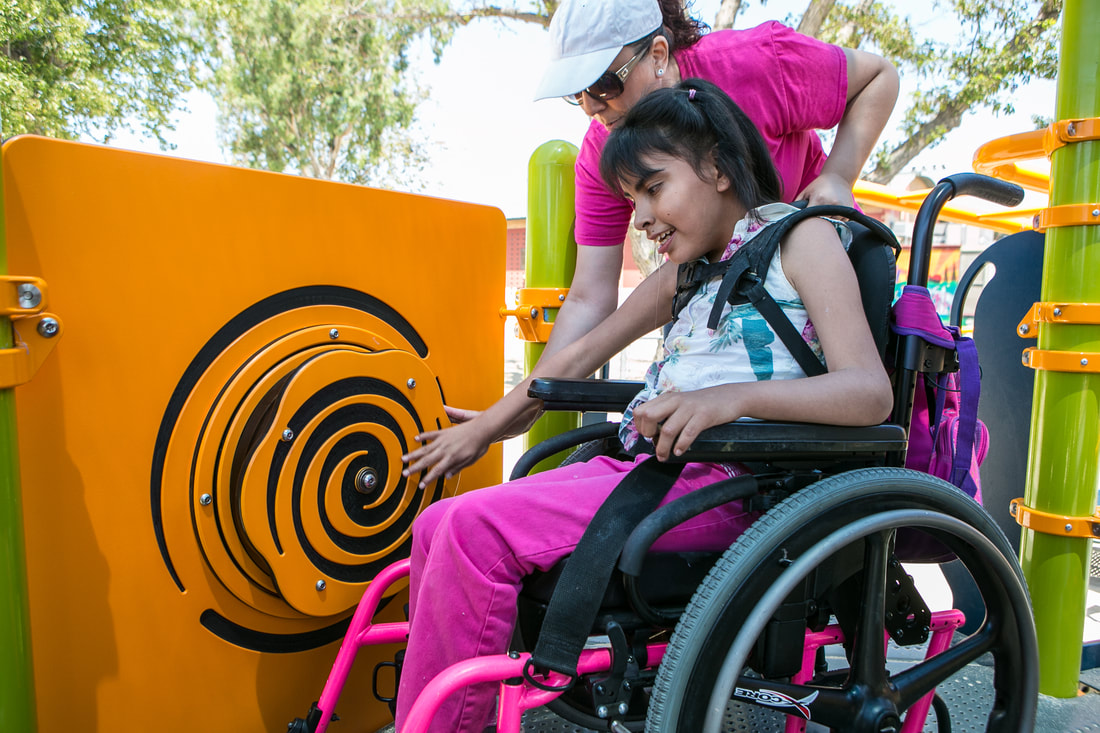Play Engages the senses
Through sensory play, play engages the senses and children discover their world and how to be successful in it. They develop behaviors based on what they touch, see, hear, taste, smell, and how they move and position their body in space. Sensory-rich playgrounds allow children to integrate and develop their senses and the more they play, the more they develop skills necessary to engage, change and impact the world around them.
the senses at play
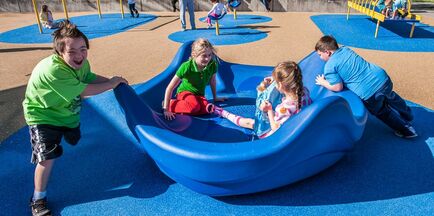
TACTILE: How the world feels
VISUAL: How the world looks
AUDITORY: How the world sounds
VESTIBULAR: How you balance within the world
PROPRIOCEPTION: Awareness of how your body is positioned within the world
MOTOR PLANNING: How you move through the world
Motor skill development that helps children attain mastery, self-esteem and physical competence.
SOCIAL/IMAGINATIVE: How you engage with the world
This is a byproduct of the senses at play. Successful integration of sensory information from the world allows children to develop healthy social and imaginative skills, leading to healthy engagement with the world around them.
VISUAL: How the world looks
AUDITORY: How the world sounds
VESTIBULAR: How you balance within the world
PROPRIOCEPTION: Awareness of how your body is positioned within the world
MOTOR PLANNING: How you move through the world
Motor skill development that helps children attain mastery, self-esteem and physical competence.
SOCIAL/IMAGINATIVE: How you engage with the world
This is a byproduct of the senses at play. Successful integration of sensory information from the world allows children to develop healthy social and imaginative skills, leading to healthy engagement with the world around them.
how play engages the senses
|
Sliding:
Sliding integrates multiple senses, including vestibular, tactile and proprioception. On the Rollerslide, the rollers provide a deep pressure tactile input that many children, especially those with sensory disorders, crave as a calming influence. Horizontal rolling like the Roller TableTM lets children slide back and forth on all sides of their bodies, which allows for proprioceptive and tactile stimulation, and challenges upper body strength. |
|
Spinning:
Multidimensional movements like spinning and rotating supply children’s brains with valuable, complex vestibular and proprioceptive information. This connects input from head and body position in space, helping children maintain proper body posture and balance while they play. Consider equipment that offers thoughtful benefits like high-backed support (like on the OmniSpin® Spinner) or convenient wheelchair access (like the We-Go-Round®). Both of these also provide opportunities for interchangeable roles and group interaction. |
|
Swinging:
The back-and-forth movement of swinging provides a child’s nervous system with a wealth of visual, vestibular and proprioceptive stimulation as they learn how their bodies move in space and how much effort it takes to increase or decrease their speed. Integrating many options for swinging offers lots of ways to build vestibular senses. For example, the Oodle® Swing and the Friendship® Swing are designed to encourage social play while swinging. And ZipKrooz® Assisted provides every child with the linear experience of flying. |
|
Climbing:
All children desire to climb, which stimulates the tactile, proprioception, vestibular and visual senses. Each system learns about textures, muscle activation needed to pull against gravity, and integrates with what the child sees while climbing. This allows kids to effectively relate to objects and navigate in the world. |
|
Social/Imaginative:
It’s important to create opportunities for all levels of social interaction. Imaginative play is where children get to “try on” the many roles and activities of life. This helps develop “whole child” learning. Components like the We-saw™ and Sway Fun® Glider encourage cooperation and build camaraderie as all play together. Components like the Cozy Dome® provide a place where children can slip away to explore quieter play adventures. |
|
Tactile:
A variety of tactile inputs helps children organize sensory information from the world around them. Manipulative media like sand and water pair creative play with an ideal sensory experience. And because they’re fun, tactile play elements often help solo play progress into cooperative play. |
